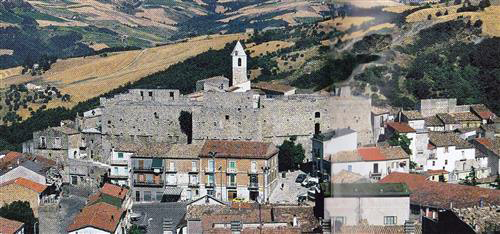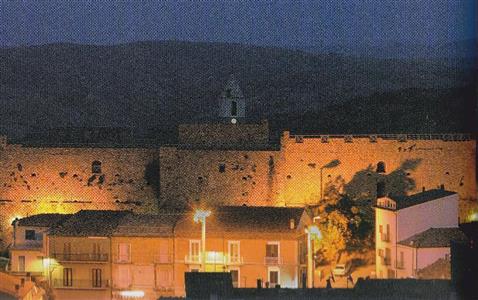Castelli del Molise
Il castello di Tufara
|
Sono decisamente originali le forme del castello di Tufara e cio'
è dovuto in parte alle vicende edilizie vissute, in parte alla conformazione
tufacea su cui fu edificato.
I resti di un recinto ligneo attestano l'origine longobarda del
complesso edificio che assunse le forme di fortilizio grazie ai Normanni.
|
 |
Il castello fu distrutto per ordine di Federico II di Svevia nel
1220. A seguito della ristrutturazione la cortina muraria fu allungata nel 1330
e nel 1500. Tra il XVI e XVII secolo la struttura fu adattata a nuove esigenze
difensive e assunse, in linea generale, la forma visibile oggi.
All'interno, tra vari ambienti, restaurati a partire dagli anni
Ottanta, risulta particolarmente interessante l'aula rettangolare coperta con
volta a botte che presenta, nella parete, 17 nicchie poste a distanza regolare
l'una dall'altra: un dormitorio o forse una sala d'armi. I lavori di restauro
hanno inoltre portato alla luce le dieci cisterne di cui era dotata la fortezza.
Tufara Castle
 |
Its particular shape is due both to the many changes it underwent
and to the tuffaceous conformation of the ground where it lies.
The remains of a wooden palisade are a clear sign of the Lombard
origin of the well built castle, which the Normans turned into a stronghold
afterwards. Frederick II of Swabia destroyed the castle in 1220. In the 14th
and 15th centuries major restoration works began and the enceinte was extended.
|
The structure was adapted to meet new defense needs and took the
present shape between the 16th and 17th centuries. The castle underwent a
substantial restoration in the 80s, and the final result was an interesting
barrel vaulted rectangular hall displaying 17 niches symmetrically placed on the
walls.
It was probably a dormitory or an armoury. Furthermore,
restoration works brought to light ten tanks.